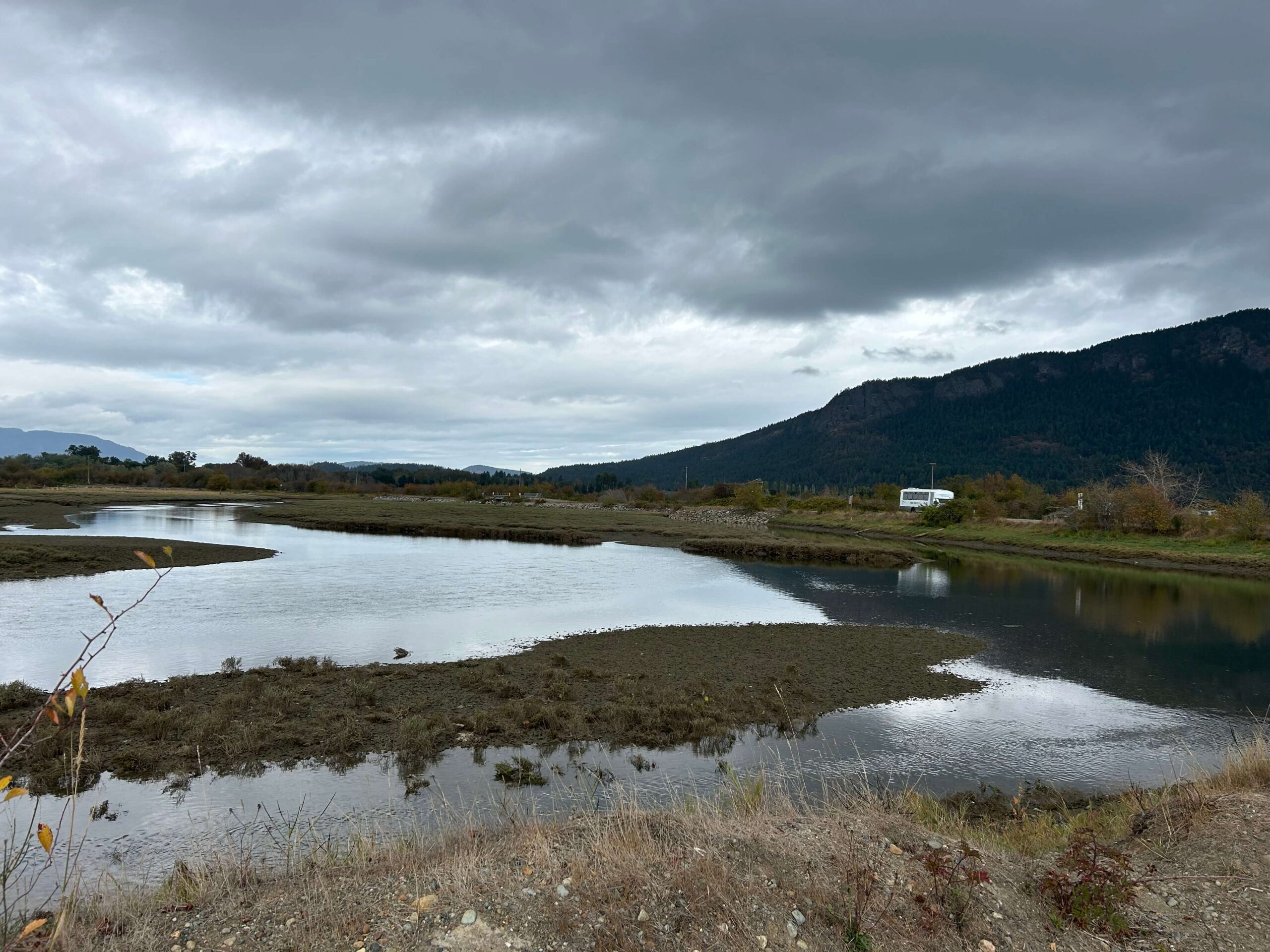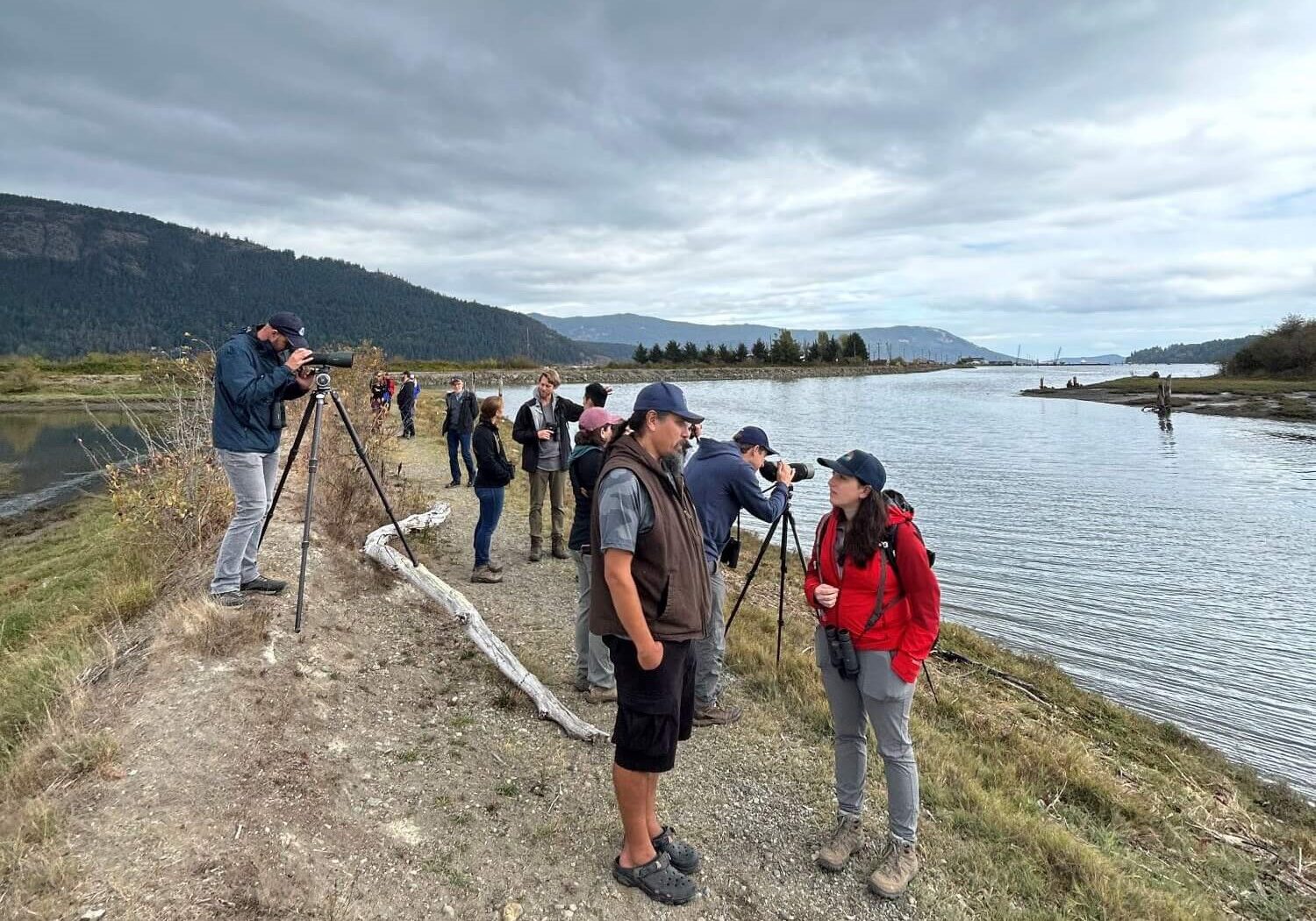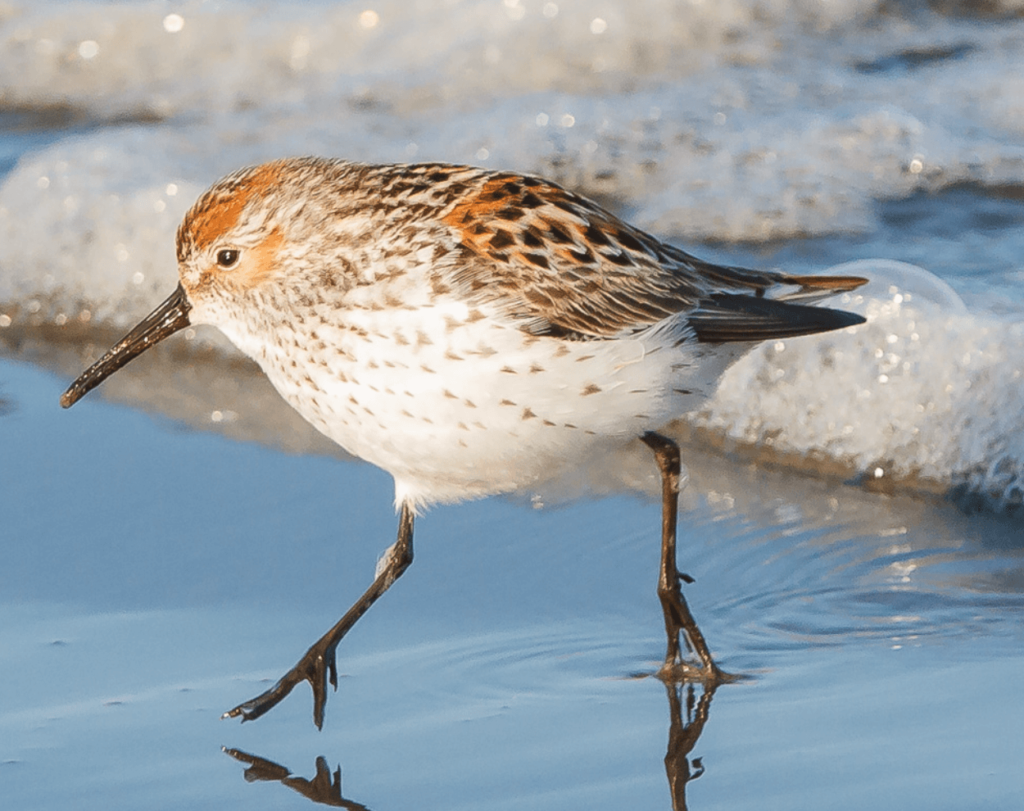
View of proposed restoration areas of the Cowichan Estuary. Photo: Natalie Myers
History of the Cowichan Estuary
Along the eastern coastline of Vancouver Island in British Columbia, Canada – a place known for its lush forests and incredible wildlife, is the Cowichan Estuary. The site where the Cowichan and Koksilah rivers merge, the estuary is one of the largest and most productive intertidal zones on the island – home to incredible biodiversity, including thousands of bird species, salmon, and orca whales.
The estuary is also one of many places across Vancouver Island that holds historical and cultural significance for First Nations peoples. For generations, the Quw’utsun Mustimuhw (Cowichan People) relied on this estuary – which provided sustainable food sources including shellfish, seaweed, herring roe, and salmon – for their livelihood.
Fast forward a few hundred years, the estuary and surrounding lands were dominated by industry. In the 19th century, practices associated with logging, agriculture, and mining industries damaged the health and structural integrity of the estuary. These practices continued into the 20th century, and in combination with urban development, ultimately led to significant degradation to the estuarine ecosystem and a ban on shellfish harvesting as a result of pollution making them inedible.

Pacific Birds International Management Board listens to Tom Reid of The Nature Trust of British Columbia and Tim Kulchyski of the Cowichan Tribes share about the history and future of the Cowichan Estuary. Photo: Natalie Myers
Restoration
Restoration efforts began in 1985 when partners at the Nature Trust of British Columbia, Ducks Unlimited Canada, and the Pacific Estuary Conservation Program worked together to purchase the land and begin getting protections for much of the estuary. Now, a new restoration project led by Cowichan Tribes, The Nature Trust of British Columbia, and partners of the West Coast Conservation Land Management Program is working to further restore the salt marsh habitat and re-establish natural estuarine processes in the bay.
The Cowichan Estuary Restoration Project is one of the largest estuary restoration projects ever to be completed on Vancouver Island, set to restore 70 hectares and increase the resilience of the habitat to flooding and sea level rise.
The Pacific Birds International Management Board and staff visited the Cowichan Estuary a few weeks ago as part of the fall Board meeting, taking in the salty air and the sounds of calling gulls. Here, we heard from Tom Reid, the Program Manager of the West Coast Conservation Land Management Program at The Nature Trust of British Columbia and Tim Kulchyski of the Cowichan Tribes.
“Our detailed monitoring and assessment work has revealed the Cowichan Estuary will not be resilient to sea level rise and climate change and is at risk of losing 60% of the marsh habitat by 2100. The restoration project is focused on building the adaptive capacity of the area by restoring 70ha of estuarine habitat previously alienated by dikes and industrial development so that the estuary can continue to provide habitat for fish and wildlife; support the local and coastal economy; and continue to provide the natural environmental services to the Cowichan community.”
- Tom Reid, Program Manager of the West Coast Conservation Land Management Program at The Nature Trust of British Columbia

Pacific Birds International Management Board members learn about the Cowichan Estuary, take in the views, and bird watch. Photo: Natalie Myers
“The Quw'utsun Mustimuhw (Cowichan People) have long been stewards of the lands and waters. We have witnessed the changes in our estuary over time, which have had a dramatic impact on our resources. Cowichan Tribes aim to contribute to the management of our traditional territory through habitat restoration and monitoring of this important ecosystem. We look forward to seeing this important work continue, and to keep our territory thriving for future generations."
- Larry George (Smaalthun), Director Lulumexun - Lands and Self Governance Department, Cowichan Tribes
As Tom shared, starting this August, the team began work to restore salt marsh habitat, re-establish estuarine processes, and reconnect freshwater and tidal areas. Before this could happen, the team did extensive research and monitoring, incorporating metrics from the U.S.-based National Estuarine Research Reserve to help assess sea level rise risks for the estuary and identify ways to improve ecosystem resilience for people and wildlife going forward. Future work planned includes raising access roads to maintain flood protections, creating areas for native vegetation to grow, removing remnant agricultural dikes to help re-establish natural tidal and freshwater flows, and supporting natural salt marsh development. The full project details can be found on the Cowichan Estuary story map.
Altogether, the project will help improve and re-establish around 70 hectares of marshland. Not only does this ultimately improve the health and functionality of the estuary – it also helps restore one of the most biodiverse intertidal regions in the area, with benefits for both people and wildlife.

A Western Sandpiper, one of the B.C. Joint Venture priority species and one of the many species that rely on stopover sites like the Cowichan Estuary during their migrations. Photo: © Barry Troutman
“From 2015-2023, our monitoring data has shown that there is higher species diversity and abundance in terms of waterfowl, shorebirds, herons and raptors utilizing the estuarine marsh and intertidal habitat than on the farm fields. By restoring natural estuarine habitat over time we anticipate a greater diversity and abundance of birds that will utilize the restored area, which includes the majority of priority waterfowl species identified by the Pacific Birds Habitat Joint Venture.”
- Estuary Resilience Canada
Healthy Estuaries
As freshwaters flow from the Cowichan and Koksilah rivers, they merge with salt water from the bay, creating brackish waters throughout the estuary that support eelgrass beds and Pacific salmonids and other juvenile fishes. These marshlands provide vital habitat for up to 230 bird species, including waterfowl, shorebirds, raptors, and other migratory species.
Estuaries and salt marsh habitats like those at Cowichan Bay provide food for birds in the form of fish, plants, and invertebrates like shellfish and worms. Healthy estuaries are particularly important, as they provide stopover and refueling habitats for migratory and overwintering species, like the Western Sandpiper, Hooded Merganser, Great Blue Heron, and Willow Flycatcher, many of which are JV priority species in BC.
Outside of the many benefits for birds, this project reflects a new era of conservation that brings together government, nonprofit, and Indigenous partners to accomplish our goals and address shared and differing priorities. It reflects an ecosystem-wide approach to conservation, centered on improving the health of the entire habitat in order to provide benefits to people and other wildlife in addition to birds.
"Estuaries like the Cowichan are critically important for migratory bird populations throughout the Pacific Flyway, supporting birds as they travel between the Arctic and South America. The loss of these habitats has international impacts, so we're thrilled to see efforts to restore estuarine processes and improve habitats benefitting birds and people happening at the Cowichan Estuary."
- Nanette Seto, Pacific Birds Habitat Joint Venture U.S. Board Co-Chair
Local projects like this one have benefits that stretch far beyond Cowichan Bay: estuarine stopover habitats are critical in ensuring migratory birds can reach their destinations in places like Alaska or Hawaiʻi, where they can signal the changing seasons, provide sustenance, and hold great cultural value.
Thriving estuaries also help reduce flood impacts for humans, increase shellfish productivity, and filter contaminants from freshwaters as they flow from land to sea, meaning our oceans and the species that live within can remain healthier. Many of the metrics and management protocols used to increase the resilience of the estuary come directly from those developed by U.S. partners, illustrating the collaborative nature at the heart of this project. From the role of this restoration project in supporting migratory birds and waterfowl to the ways it will enhance the stability of this incredibly rare ecosystem, we are proud to support this work.
